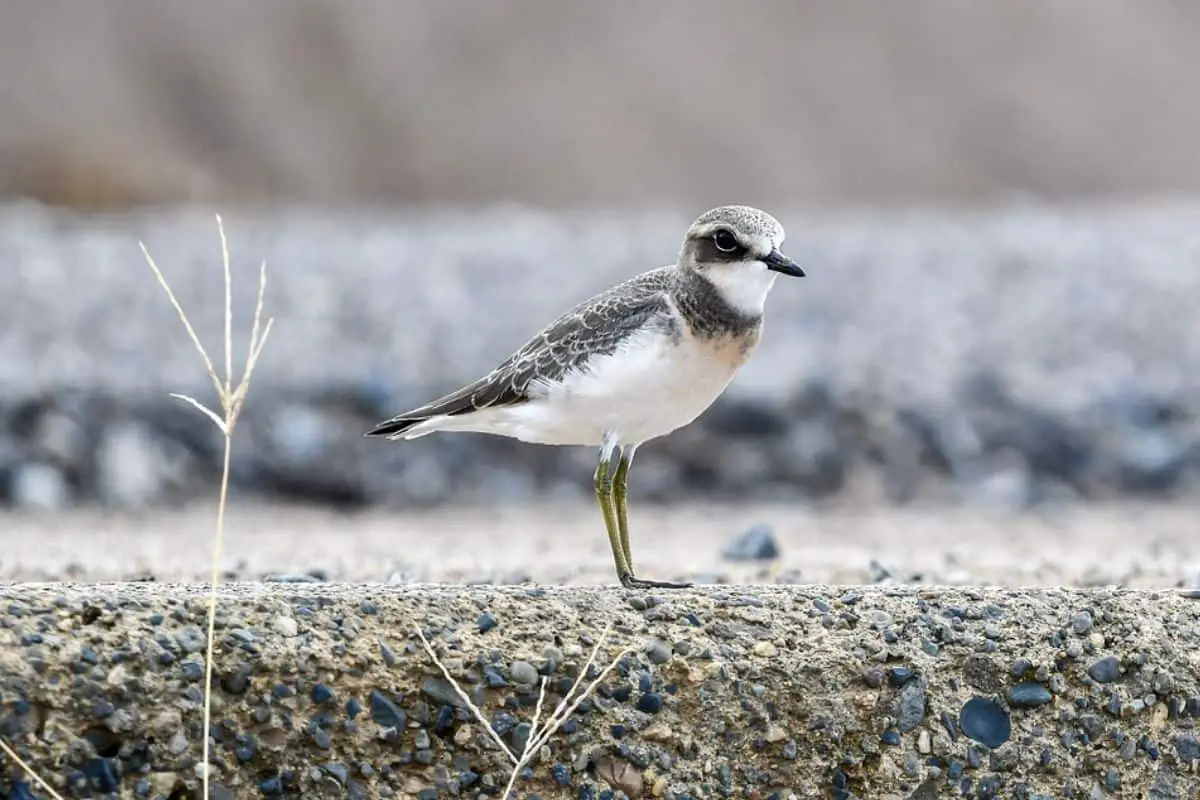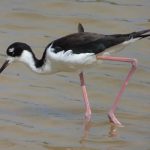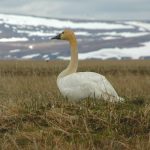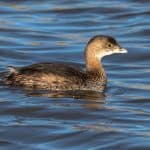Common Name: Lesser Sand Plover
Scientific Name: Charadrius mongolus| Size | Diet | Range in Hawaii | Status in Hawaii |
|---|---|---|---|
| 7 in. - 8 in. | crustaceans, insects, worms, and mollusks | Unknown | Least Concern |
The lesser sand plover, also known as Charadrius mongolus, is a small wader that breeds in the high Arctic regions of Eurasia. However, this bird is also a non-breeding visitor and vagrant in Hawaii, where it can be spotted along the sandy beaches and rocky shores.
With its distinctive brown and white plumage, the lesser sand plover is a fascinating bird to observe, especially when it makes its rare appearance in the tropical paradise of Hawaii. In this article, we will delve into the world of the lesser sand plover and discover what makes this bird so unique, including its migration patterns, habitat preferences, and behavior when it visits the beautiful islands of Hawaii.
Lesser Sand Plover
Appearance
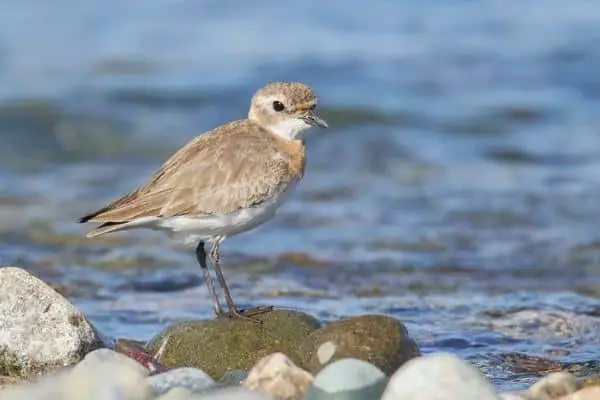
The Lesser Sand Plover is a small shorebird with a distinctive appearance. It has a compact body, short neck, and a relatively short, straight bill. The plumage of adult birds varies depending on the season.
During the breeding season, they display a striking black crown, white forehead, and a chestnut-colored back. In non-breeding plumage, their crown and face become pale gray, and their back turns pale gray-brown. Juvenile birds have a sandy-brown coloration overall.
In terms of size, the Lesser Sand Plover measures approximately 7-8 inches (18-20 centimeters) in length. They have a wingspan of about 16-18 inches (40-45 centimeters). Despite their small size, these plovers are agile and well-adapted to their coastal habitats, where they forage for food and engage in various behaviors.
Diet
The Lesser Sand Plover has a diverse diet that mainly consists of small invertebrates found in coastal areas. They feed on various prey, such as crustaceans, insects, worms, and mollusks. Their feeding strategy involves probing and pecking at the ground or shallow water to capture their prey.
During migration and wintering periods, they may also consume seeds and plant matter. Their small size and agile foraging abilities enable them to efficiently search for food along sandy shores and tidal flats.
Nesting
The Lesser Sand Plover is known for its ground-nesting behavior. They typically build their nests on sandy or gravelly areas near the coast, often in open or sparsely vegetated habitats. The female constructs a shallow depression in the ground, lining it with bits of vegetation or pebbles. The male assists in the nest building process and defends the nesting territory.
The female lays a clutch of 2 to 4 eggs, which are usually camouflaged to blend with the surrounding environment. Both parents take turns incubating the eggs for about 26 to 28 days. After hatching, the chicks are precocial, meaning they are relatively independent and mobile soon after birth. The parents provide protection and guidance to the chicks, helping them find food and avoid predators.
The nesting period is crucial for the survival and success of the Lesser Sand Plover population. They are highly protective of their nests and may perform distraction displays or vocalize loudly to deter potential threats. The parents remain vigilant and dedicated to caring for their offspring until they fledge and become capable of independent survival.
Behavior
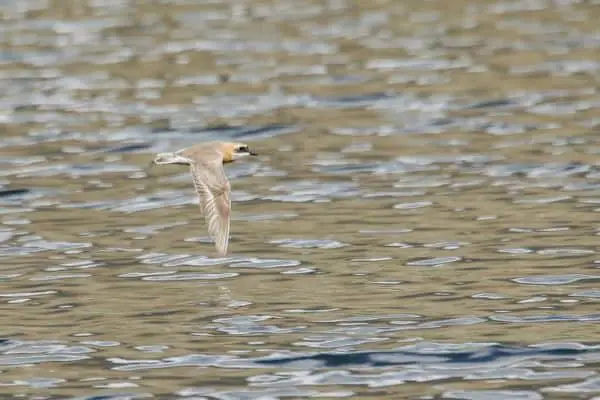
The Lesser Sand Plover is an active and agile shorebird known for its distinctive behaviors. One of its primary activities is feeding, where it displays a foraging technique by probing the sand or mud with its bill.
This probing behavior allows the plover to search for and capture a variety of small invertebrates, including insects, crustaceans, mollusks, and worms. They are also skilled at catching prey in shallow water or picking food items from the surface.
The plovers are constantly on the move, often seen running along the shoreline or swiftly darting in pursuit of their next meal. Their behavior reflects their adaptability to coastal habitats and their efficient hunting strategies.
Habitat
The Lesser Sand Plover is a shorebird that primarily inhabits coastal and shoreline habitats. It can be found in a variety of locations, including sandy beaches, mudflats, estuaries, coastal marshes, and lagoons.
During the non-breeding season, these birds are known to frequent intertidal zones and tidal flats where they can find ample food resources. They are well-adapted to the dynamic nature of coastal environments and are often seen near the water’s edge, taking advantage of the rich biodiversity found in these habitats.
The plovers rely on open areas with sandy or muddy substrates, as well as areas with sparse vegetation that allow them to easily locate and capture their prey. Whether it’s a tropical shoreline or a temperate estuary, the Lesser Sand Plover can be found in a range of coastal habitats throughout its distribution.
Range
The Lesser Sand Plover is a non-breeding visitor and vagrant in Hawaii. It breeds in northeastern Eurasia and extreme western Alaska and migrates to regions including India, Southeast Asia, and Australia for the winter.
While it is a regular migrant and wintering species in the western Pacific Islands, it has also been observed as a rare visitor along the coasts of North America and in the Hawaiian Islands. Despite its extensive range, sightings of the Lesser Sand Plover in Hawaii are relatively infrequent.
Conservation Status

The conservation status of the Lesser Sand Plover is assessed as “Least Concern” by the International Union for Conservation of Nature (IUCN). Although specific population estimates are unknown, the species has a large global range and its population is believed to be stable.
The Lesser Sand Plover benefits from protected areas and its ability to adapt to a variety of coastal habitats. While localized threats such as habitat loss and disturbance may impact certain populations, overall, the species is not currently considered to be at significant risk of extinction.
Interesting Facts
1. Social behavior
Lesser Sand Plovers are often seen in small flocks or mixed-species groups during migration or in their wintering grounds. They engage in social interactions, such as foraging together or displaying territorial behavior.
2. Unique plumage
During the breeding season, male Lesser Sand Plovers exhibit striking black and white plumage with distinct markings, including a black breast band. Females and non-breeding adults have more subdued plumage.
3. Birdwatching delight
With their striking plumage and fascinating behavior, the Lesser Sand Plover is a sought-after bird species among birdwatchers and nature enthusiasts. Spotting one of these charismatic plovers is always a memorable experience.
4. Vocalizations
During courtship and territorial displays, the Lesser Sand Plover utters various calls and vocalizations. The male’s call is a soft, melodious whistle, while the female’s call is typically a short, sharp note.
5. Feather adaptation
The Lesser Sand Plover has specialized feathers on its breast and belly that help regulate its body temperature. These feathers can be puffed up to create an insulating layer or flattened to dissipate heat, allowing the bird to adapt to different environmental conditions.
Frequently Asked Questions
1. How long do Lesser Sand Plovers live?
On average, Lesser Sand Plovers have a lifespan of 5 to 8 years. However, some individuals have been known to live for more than 10 years.
2. Do Lesser Sand Plovers have any predators?
Yes, like many bird species, Lesser Sand Plovers have predators in their natural habitats. Potential predators can include larger birds, such as gulls, raptors, or crows, as well as mammals like foxes and stoats. However, their excellent camouflage and nesting strategies help reduce the risk of predation.
3. Are Lesser Sand Plovers monogamous?
Yes, Lesser Sand Plovers are generally monogamous, forming pair bonds that last for a breeding season. They typically engage in courtship displays and share parental duties, such as incubating the eggs and caring for the chicks.
4. How do Lesser Sand Plovers communicate with each other?
Lesser Sand Plovers use various forms of communication, including vocalizations, visual displays, and body postures. They have different calls for different purposes, such as courtship, territorial defense, or alarm calls to warn others of potential threats.
